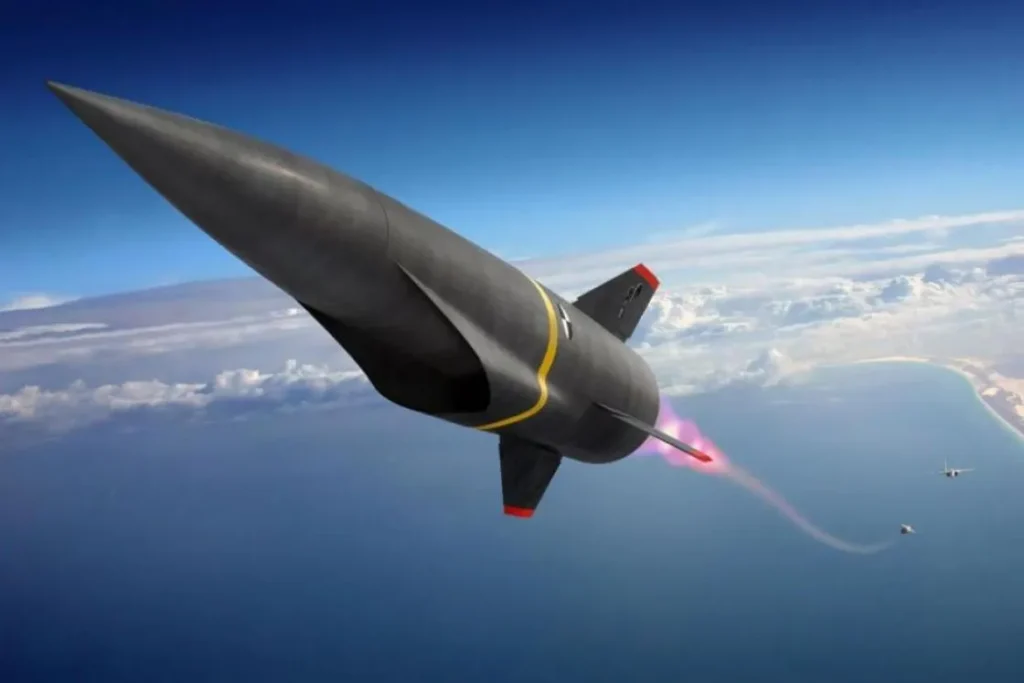Ballistic vs Hypersonic Missiles: Understanding the Modern Arms Race
In the ever-evolving landscape of modern warfare, missiles stand as pivotal instruments of power projection and deterrence. Among the various types, ballistic and hypersonic missiles represent the pinnacle of long-range strike capabilities, each possessing unique characteristics that pose distinct challenges to global security. While both are designed to deliver payloads over vast distances at incredible speeds, their trajectories, maneuverability, and defensive implications set them apart, driving a continuous race for technological supremacy among major military powers.
The Trajectory of Power: Ballistic Missiles
Ballistic missiles are a class of missile that follows a ballistic trajectory to deliver one or more warheads to a predetermined target. This trajectory is largely determined by gravity and air resistance after the initial boost phase, where powerful engines propel the missile to extreme altitudes, often into sub-orbital space.
How They Work: A ballistic missile’s flight path typically consists of three phases:
- Boost Phase: The missile is launched and propelled by its engines, usually solid or liquid fuel, pushing it out of the Earth’s atmosphere. This phase can last from a few minutes to several minutes, depending on the missile’s range.
- Midcourse Phase: Once the engines shut down, the missile’s warhead (or multiple warheads, known as Multiple Independently Targetable Reentry Vehicles – MIRVs) detaches and continues its flight in a vacuum. It follows a predictable, arcing path, similar to a thrown ball, reaching altitudes of hundreds or even thousands of kilometers.
- Terminal Phase: As the warhead re-enters the Earth’s atmosphere, it is subject to intense heat and friction. It then descends towards its target, guided by internal systems or simply by its pre-programmed trajectory.
Key Characteristics of Ballistic Missiles:
- Predictable Trajectory: After the boost phase, the trajectory is largely predictable, making them theoretically detectable and interceptable, though extremely challenging due to their speed.
- High Altitude: They travel at very high altitudes, often beyond the atmosphere, which allows for intercontinental ranges.
- Speed: Intercontinental Ballistic Missiles (ICBMs) can reach incredible speeds, up to Mach 20-24 (24,000 to 29,000 km/h) in their midcourse phase, making interception difficult.
- Payload Capacity: They can carry substantial payloads, including conventional, chemical, biological, or nuclear warheads.
- Launch Platforms: Ballistic missiles can be launched from fixed silos, mobile launchers, submarines (Submarine-Launched Ballistic Missiles – SLBMs), or even aircraft.
Ballistic missiles have been a cornerstone of strategic deterrence since the Cold War, with their development largely pioneered by the Soviet Union and the United States. For a deeper dive into the history and development of these formidable weapons, sources like the Al Jazeera Encyclopedia on Ballistic Missiles offer valuable historical context.
The New Frontier: Hypersonic Missiles
Hypersonic missiles represent a newer, more advanced generation of missile technology, characterized by their ability to travel at speeds exceeding Mach 5 (five times the speed of sound) while maintaining significant maneuverability within the atmosphere. This combination of extreme speed and unpredictable flight paths makes them particularly challenging for existing missile defense systems.
How They Work: There are primarily two types of hypersonic missiles:
- Hypersonic Glide Vehicles (HGVs): These are launched into space by a ballistic missile, similar to a traditional ballistic missile warhead. However, instead of following a predictable ballistic arc, the HGV detaches and glides through the upper atmosphere at hypersonic speeds, performing complex maneuvers to avoid interception.
- Hypersonic Cruise Missiles (HCMs): These are powered by air-breathing engines, such as scramjets, which allow them to sustain hypersonic speeds within the atmosphere. They fly at lower altitudes than HGVs, employing highly unpredictable trajectories.
Key Characteristics of Hypersonic Missiles:
- Extreme Speed and Maneuverability: Their defining feature is their ability to fly at speeds exceeding Mach 5 (over 6,174 km/h) while actively maneuvering, making their path unpredictable. This contrasts sharply with the fixed ballistic trajectory of traditional missiles.
- Low Altitude Flight (for HCMs): Hypersonic cruise missiles can fly at relatively low altitudes within the atmosphere, making them difficult to detect by traditional ground-based radar systems that are designed to look for high-altitude threats.
- “Pop-up” or “Skip” Maneuvers (for HGVs): HGVs can “skip” along the edge of the atmosphere, making their re-entry point highly uncertain and frustrating attempts at interception.
- Plasma Sheath: At hypersonic speeds, the air around the missile ionizes, creating a plasma sheath. This plasma can interfere with radio communications and GPS signals, making it difficult for the missile to communicate with ground control or receive accurate targeting information, but also making it harder for opposing forces to track.
- Short Warning Times: Due to their speed and trajectory, the time available for detection, tracking, and interception is drastically reduced, posing a significant challenge to existing defense systems.
The development of hypersonic missiles is a priority for several nations, including Russia, China, and the United States, as they seek to gain a strategic advantage. For more information on the challenges these weapons present to defense systems, articles like Al-Mayadeen’s report on Hypersonic Missile Challenges provide context on the defensive challenges.
Key Differences and Strategic Implications
The fundamental distinction between ballistic and hypersonic missiles lies in their flight characteristics post-launch:
- Trajectory: Ballistic missiles follow a high-arc, parabolic path, exiting and re-entering the atmosphere. Hypersonic missiles, particularly HCMs, operate within the atmosphere, enabling more direct and maneuverable flight paths. HGVs, while launched ballistically, transform their flight into a gliding, maneuverable phase upon re-entry.
- Maneuverability: Ballistic missiles have limited maneuverability in their terminal phase once their engines cut off. Hypersonic missiles are designed for continuous high-speed maneuvering, making them extremely difficult to predict and intercept.
- Detectability: The high altitude of ballistic missiles makes them detectable by early warning radar systems for a significant portion of their flight. Hypersonic missiles, especially those flying at lower altitudes and with plasma sheaths, are much harder to detect and track, reducing warning times.
- Defense Challenges: Existing missile defense systems are primarily designed to intercept ballistic missiles by predicting their trajectory. The unpredictable nature and extreme speed of hypersonic missiles render many current defense systems obsolete or less effective, creating a significant strategic dilemma. This has led to an accelerated effort by nations to develop new defensive capabilities.
The advent of hypersonic technology introduces a new dimension to strategic deterrence, potentially upsetting the balance of power. The ability to strike targets quickly, precisely, and with little warning creates a more complex and potentially unstable security environment. Nations are now investing heavily in both developing their own hypersonic capabilities and devising new methods to counter those of their adversaries. This arms race underscores the continuous innovation in military technology and its profound impact on global strategy. For further reading on the ongoing race to develop these advanced weapons, look for information on the global hypersonic missile race.
Conclusion: A Future of Speed and Uncertainty
Both ballistic and hypersonic missiles represent formidable technological achievements, designed to deliver decisive strategic blows. While ballistic missiles have long been the backbone of nuclear deterrence, the emergence of hypersonic weapons introduces a new era of challenges, particularly concerning defense and strategic stability. The blend of extreme speed, maneuverability, and reduced detection windows makes hypersonic missiles a game-changer, pushing nations to re-evaluate their defense strategies and accelerate research into advanced interception technologies. As this technological arms race continues, understanding the nuances of these powerful weapons becomes increasingly crucial for navigating the complexities of modern international relations.



Pingback: Will We Ever Have a 25-Hour Day? The Shocking Truth About Earth's Slowing Rotation - upcorehub.com